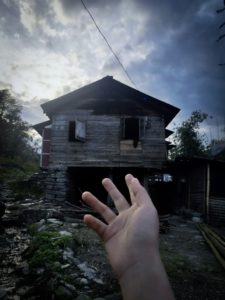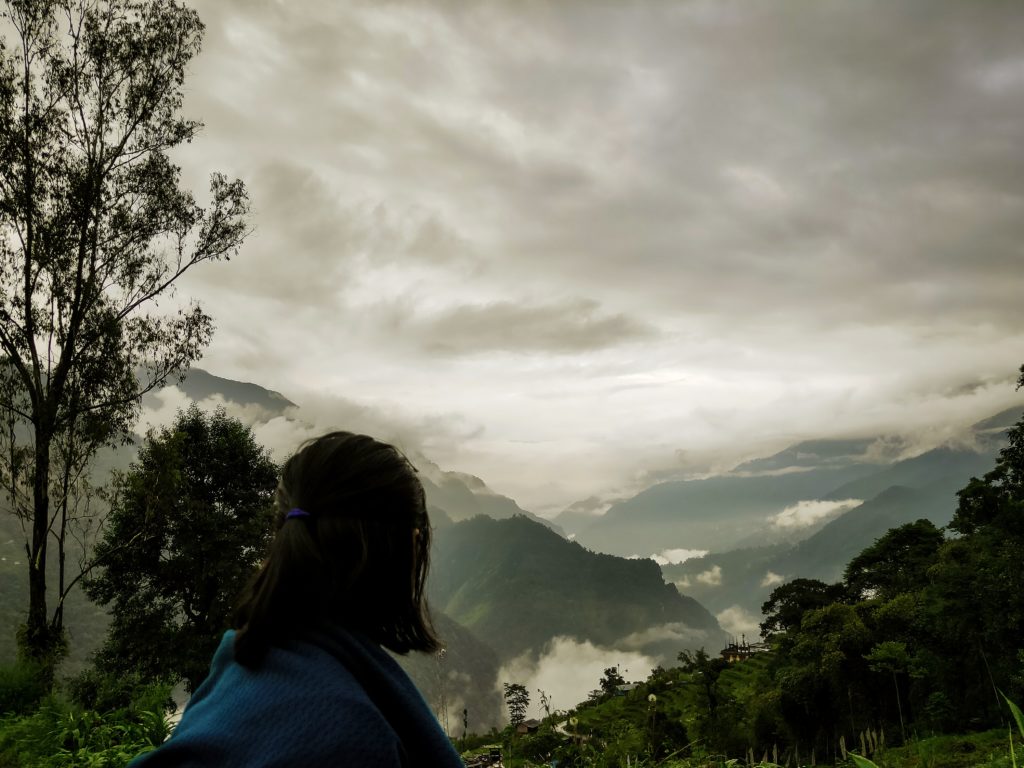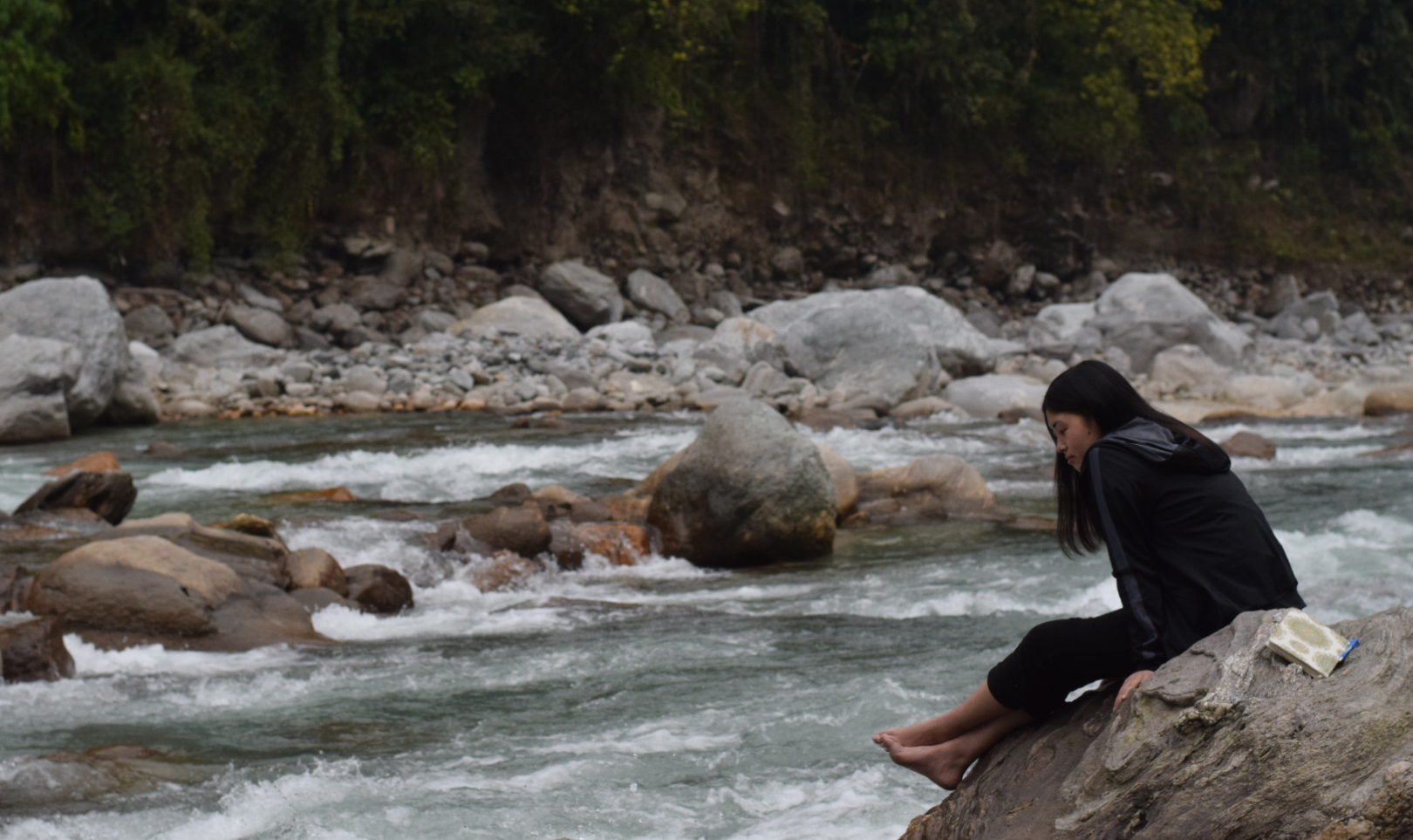by Petro Kotze and Nalori Chakma
She found her roots by the river
“I have been on a rollercoaster journey of discovery about my land and identity,” Rummit Lepcha says of her mission to reconnect with her roots and help save her home. Rummit is a member of the Lepcha community, and lives in her childhood village of Lingthem in Dzongu, in India’s North Sikkim. Her home rests on the flanks of the Himalayas, along the Rongyoung River.
The Lepchas are Sikkim’s first inhabitants, and Dzongu is considered the cradle of their civilization. Their culture, customs and traditions are bound to their deep bond with nature. “Every part of the earth is not just a resource for us to survive with, but has its own soul and ways to express itself,” Rummit explains. “The river roars in laughter as she flows, taking shape in beautiful waves; the trees glisten as the sun’s rays grab them, and the wind slowly whispers.”
“The Rongyoung River especially,” she says, “is an important entity in our life and community. The river flows down from Mt. Kanchenjunga, revered as the abode of the Lepcha guardian deity, Dzo-nga, and passes through sacred lands to the point where we meet her”, she says. “The river flows from the very Himalayas where we believe we were created. In recognition, we, as well as people of other communities, perform many rituals by the riverbank. Over and above that, the river gives life to the surrounding environment,” she says.
However, the Rongyoung River, a tributary of the Teesta River, and the Lepchas’ future are under threat.

The destruction of holy rivers
The Sikkim provincial government has awarded contracts to private operators for 26 large hydropower projects on the Teesta River, seven of which would affect the Dzongu province. Only a small section, about 8 kilometers, of the once-mighty Teesta remains free-flowing in the whole of Sikkim but this area is now earmarked the 520 MW Teesta Stage IV. A second dam, the 300 MW Panan Dam is planned for the heart of Dzongu on the Rongyong River, a stone’s throw from the Kanchendzonga National Park and Biosphere Reserve.

Rummit has seen the impact of the developments first-hand. “Our mountains are really fragile”, she says, “and the construction of roads has devastated some locations”. The area is now prone to flash floods during the monsoon season. Rummit’s own childhood home has been swept away by a landslide. “That place we called home now just remains as a memory to us.” Rummit says she does not want to see more of their land experience the same ruin and chaos.
Taking a stand
While attending a seminar in Darjeeling in 2018, Rummit saw the documentary Voice of Teesta by Minket Lepcha, on the Lepcha’s struggle to conserve their sacred land. As she watched her people struggle to save the rivers, she had to choke back her tears. “As they spoke, I was dumbfounded that I was so detached from what they were speaking about,” she says. Though she was aware of the struggles, she always thought of it as a matter for the elders. She soon joined the Affected Citizens of the Teesta (ACT), a local NGO that is fighting to protect the Lepcha’s ancestral lands from development they consider a major threat to their environment, community and culture.
As her involvement grew, she connected more with the river, coming to know the pain that Mother Nature was enduring. Increasingly, she learned that she too could contribute to the conservation of the environment, the love of their land and her community. Today, Rummit helps to organize events and publicity, and participates in conferences, demonstrations and strikes.
She says the price of doing nothing will be severe.

What stands to be lost
“If the projects go ahead, I do not see a future for our community,” she says. Already, the laws that are supposed to protect them have been violated. Sikkim was a hereditary monarchy till 1975 when it merged with India to become the 22nd state of the country. Since the merger, the Government of India has provided many safeguards for the people of Sikkim, the most important of which is Article 371 (F) of the Constitution, which protects the old laws and traditions of Sikkim. According to the law, Dzongu is reserved for the Lepcha community, but these laws are now being violated with the influx of people associated with the mega-dam developments and the impact of the projects themselves.
For Rummit, and the Lepchas, it’s difficult to imagine even further consequences. “We worship Mother Nature, but there will be wounds all over her body. The free flow of the rivers will be choked, the diverse species of flora and fauna endangered. Our very identity will be lost under the rocks crumbled to build a tunnel, a stab in the mountains.”
Becoming part of the community
Before joining the ACT, Rummit says she was self-centred, she never pushed herself beyond her comfort zone and she did not think about the environment or their disappearing cultural heritage. “As I became a part of this organisation my thoughts have broadened in terms of my community, identity and land”.
In the process, she has learned to stay rooted, to listen to the voice of her heart, and of nature. She has not been alone. More women are coming out of their patriarchal boundaries, she says. They are speaking up to be heard, and they are talking about their connection with the rivers to a wider audience. Before, our thoughts depended on men, but now we are putting our own words on the table.
Rummit says her biggest achievement in this journey has been the connection she has discovered with her surrounding environment, but especially the river. She now understands that it is not just us on this planet that needs to make a living, but that nature enables us to live. For her, the fight for the life of the rivers has led to enlightenment, culturally, socially and environmentally.
International Rivers’ South Asia program is part of the regional Transboundary Rivers of South Asia program. Supported by the Government of Sweden, TROSA is a collaboration with Oxfam, IUCN, ICIMOD and many local organizations that works on some of the more complex rivers in South and Southeast Asia: the Ganga, Brahmaputra and Meghna river systems, including their tributaries such as the Teesta, and Asia’s last last free flowing river, the Salween. The program aims to contribute to poverty reduction and marginalization among vulnerable river basin communities through increased access to and control over riverine water resources on which their livelihoods depend.

